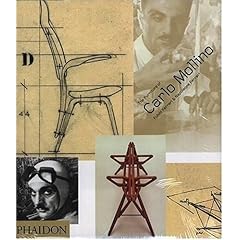Well I have just returned home from a marvelous, fantastic month in Italy and I was going through a pile of unread magazines and to my surprise I came across an article in Australia Vogue Living March/April 2008 issue on Casa Mollino, which I had just done a posting on yesterday (isn't it funny how that works), and which museum I was fortunate enough to visit when I was in Italy. I wasn't able to take my own pictures of the inside of this fantastic museum and monument of Carlo Mollino's designs, so I will indulge you with some shots from Australian Vogue Living, which is in my estimation one of the best Interior Design magazines!!!
This house of Mollino's was decorated by him over 8 years. It was his playground and mausoleum and he never slept or entertained in it.
This is the entry off the street to Casa Mollino. You can get a glimpse of the rose garden and beyond the rose garden is the River Po.
Casa Mollino occupies the first floor (which in North America would be referred to as the second floor) of this beautiful historic building.

Egyptian references in the second bedroom include snakes engraved on the boat shaped Empire bed frame, a leopard skin is set on the floor in front of the bed (not shown in this picture). The walls are covered in leopard wallpaper, which I think is still made by one of the old wallpaper companies, although their name escapes me now.
The wall as you walk into the second bedroom is covered with Mollino's butterfly collection. The creatures were cut out of the 1955 book Joyaux Ales, published by Hachette.
In the dining room is a marble table by Mollino and Tulip chairs by Eero Saarinen for Knoll. One of two Japanese paper lanterns hangs over the table, the other is in the living room. Mollino was fond of grouping items in pairs: 2 Japanese lanterns, 2 Murano glass chandeliers, 2 large Tridacna clam shells, etc. In the left corner of the dining room is an Arteluce lamp by Gianfranco Frattini. A beautiful tortoise shell hangs on the wall above the buffet. The mirror on the wall has corroded over time and is now has a beautiful patina. I love the juxtaposition of all these disparate items Mollino has created. Double velvet curtains hang at the windows and are also used to divide the rooms.
Covering the hallway floor are Vietri ceramic floor tiles featuring white flowers against a blue background. The living room wall is a Japanese style sliding partition of wood and Plexiglas.

In the lounge room is a photographic enlargement of a 19th century etching, a Louis XVI style fireplace designed by Mollino and an antique gold and ivory plaster mirror frame. A Caori coffee table by Vico Magistretti for Favina is placed in front of 19th century armchairs from Mollino's family home. The Japanese paper lantern echoes the one in the dining room opposite.
Leading to the balcony (which has a beautiful outlook over the Po river) are a Zebra hide (Joni I though of you when I saw this), 2 Tridacna clams and a Venini chandelier (one of two - the other is echoed in the entry hall). The stripes on the zebra are very indicative of the curves in Mollino's furniture designs. The mirrors on either side of the door have corroded over time and add to the magical allure of the space. Venini is still manufacturing this fixture.
A marble shelf made by Mollino in the hall next to Man Ray's iconic "Tears" photograph.
The bathroom featuring Vietri wall tiles and an "Aircraft Door" (how interesting) serves as a link to the bedroom. Over the threshold is a portrait of Marilyn Monroe by Jack Cardiff.
The Societa Ippica Building built in the late 1930s and destroyed in 1960. It was designed as a riding academy and this was the reception room. I love the totally modern and very curvaceous wall. What a shame it was demolished!!
This is Mollino's oak and glass trestle table that sold at Christie's for the world record price of nearly 4.5 Million
Left: This is a reproduction of an original Mollino design chair by Fulvio & Napoleone Ferrari at Casa Mollino. It's curvaceous design is very anatomically correct as I witnessed when I sat in it. The back resembles the curve of the spine and the seat is wonderfully contoured. Mollino's knowledge of the human body was indispensable for the creation of his revered furniture pieces: chairs, tables and shelves deriving brilliant and functional solutions from anatomical-inspired structures and shapes. I asked Napoleone if they would please bring this chair back into production.
Right: No not a picture of me, unfortunately. I was dressed in full tourist attire and as it was a very hot and humid day (approx 38 C and 67% humidity), I was a dripping puddle - not exactly the picture of seductive allure! This is a Mollino portrait of Evi circa 1950. The chair is a one-off item Mollino designed for his own home. Mollino was an avid photographer and was very fond of the female body.
The Furniture of Carlo Mollino
Napoleone & Fulvio Ferrari have written a wonderful book on the work of Carlo Mollino. It is the culmination of 3 years of research and documentation by them.
I will leave you with this great quote of Carlo Mollino:
"Everything is permissible as long as it is fantastic"
Excerpts from: Australian Vogue Living Mar/April 08
Photography: Johannes Mueller
Text: Paola Moretti
Patricia Gray writes about Interior Design inspirations, emerging trends, and the world of Design.
While you're here, subscribe to this feed so you don't miss out.
2011 � Patricia Gray | Interior Design Blog�














0 Response to "Carlo Mollino Casa Mollino"
Post a Comment